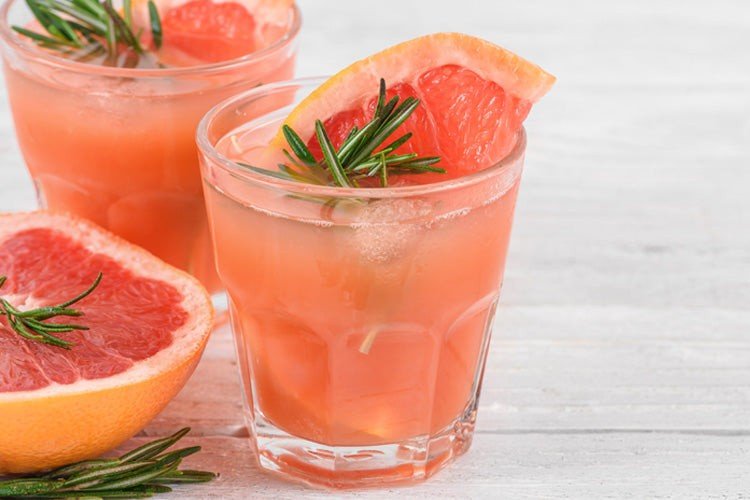
Fresh Juice At Home Can Bring Great Nutritional Value To Your Life
Everyone can remember being a child and being told to finish their vegetables. If the thought of consuming several servings of fruit a day is still unappealing to you, you are likely to love the innovative juicing techniques outlined here.
The best type of juicer to use, whether beginner or expert, is a masticating juicer. These types of juicers utilize a gentler juicing method, which helps the juice retain more nutrients. The juice obtained this way will last longer in the refrigerator.
If you are preparing a drink of dark, leafy greens, be sure to add some cucumber. A lot of leafy greens have a strong flavor. Cucumber is great at masking the strong taste, while making your drink taste more refreshing. Cucumber also contains important nutrients; include the peel for maximum benefit.
Relax while you drink your juice, and enjoy it. Make time to truly enjoy the juice so that you can taste every single flavor. As your saliva mixes with the juice, digestive enzymes can also start the work of unlocking the juice's nutrients.
Some people prefer to use juice as a substitute for a meal. When you find out how much food goes into a glass of juice after preparing it several times, you will understand why this is so. Drinking fresh juice alone as a meal allows the juice's nutrients to quickly enter your bloodstream.
Once you have completed making your juice, wash the machine right away. Also, some colorful fruits and vegetables can build up dark stains on the juicer components.
If your kids are downright opposed to the look or taste of vegetables, you should try juicing the veggies to make them more palatable. Children are notorious for disliking vegetables. To get these children the nutrients they need from vegetables, it's a good idea to juice vegetables together with fruits to develop a great tasting drink.
You are going to get pulp in your juice sometimes, however, you can remedy this with a coffee filter. You might not enjoy the consistent pulp some juices make. Strain juices through a cheesecloth or a coffee filter to get rid of the pulp.
When trying to decide on a juicer, find a model that is easily dismantled for quick clean-up. If it's 10 minutes to put together the juicer, another 10 minutes for using it to make juice, and 15 minutes for cleaning it after that, you may not want to juice! Make sure to clean your juicer soon after you've finished with it, as pulp can stick to your juicer and harden, making cleaning more difficult.
If your bladder is upset, or if you've got a urinary tract infection, try juicing cranberries. Start adding them the moment you feel there may be a problem.
If you drink juice, be aware of how your body reacts to it. For some people, certain ingredients simply do not sit well in the body. If you experience queasy feelings or stomach churning when drinking a certain juice, you should check out the ingredients, and attempt to determine the items that are new and are rarely consumed. You can then use smaller amounts and condition your body to them.
After using your juicer, you should consume the juice as soon as possible. In order to reap the optimum benefits from juicing, drink immediately after making. The longer amount of time that you wait to consume the juice, the less nutrients you'll receive. That said, try drinking your juices immediately.
You want to try to add sweets to your juice, like berries, carrots or citrus. My favorite way to drink cranberries is blended with strawberries, blueberries, and cherries. Make your own mix to match your taste preferences.
When juicing, consider using vegetables or fruits that would not normally appeal to you and use other components to mask their flavor. This will help you to get all the nutrients you need, especially ones you might miss otherwise. If the overall flavor of your juice blend is less than palatable, you can use juice from apples and lemons to mask the taste.
Aim to include tons of negative calorie foods into your juicing in order to receive a very nutritious, healthy juice without having to burn off the fat that juicing can create. These items include dark greens like kale or broccoli, cabbage, and herbs. Fruits that have a high fiber content are also great choices, as they use additional body resources, while digesting, to properly break them down.
To keep dark leafy greens fresh by the the time they need juiced, put them in a fairly tight-sealed zipper bag. Wash any dirt off of them and dry them before storing them in the bags.
Creating "signature" drinks or taste-testing competitions are fun ways to involve the entire family in the juicing process. Allow your child to rinse the fruits and vegetables in the sink before you chop them.
Every single time you juice, you will end up creating pulp. The amount of pulp you create depends on the type of vegetable or fruit that you juiced. The fiber provided in this pulp can be saved and used in future drinks.
When choosing vegetables for juicing, select the ones that you know you enjoy eating. You should really enjoy drinking your juice, instead of being apprehensive about it. By starting with flavors that you know you enjoy, will enjoy the juice more!
Remember to take pits out of fruit, such as peaches, before placing them in your juicer, even if it is a heavy duty model. If not, you will be getting a big repair bill in the future. Make sure to core your apples and remove their seeds, since some of these seeds contain cyanide.
Studies have shown that consuming fruits and vegetables can improve health and well-being. Juicing is a great way to increase your intake of fruits and vegetables. This article will introduce you to juicing basics, so that you can start to get the benefits of not only healthy eating but healthy drinking.












